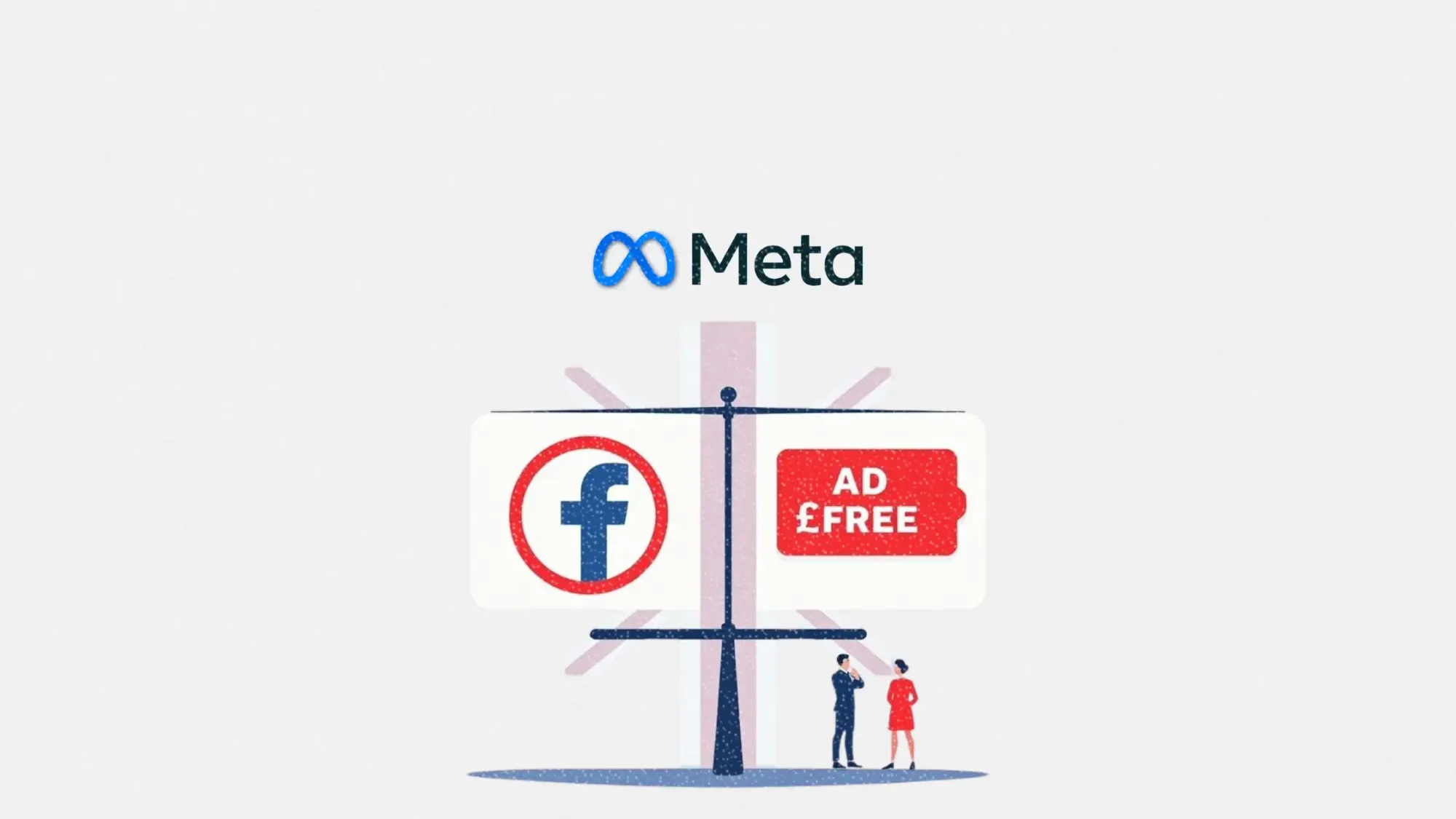Meta offers ad-free Facebook and Instagram in the UK, for a price
Meta is giving UK users the option to pay for ad-free access. This could reshape how marketers reach audiences.

Meta is launching a paid subscription in the UK that lets Facebook and Instagram users over 18 opt out of ads. Starting soon, users will receive dismissible notifications offering the choice to subscribe or continue using the free, ad-supported experience.
The move aligns with recent guidance from the UK’s Information Commissioner’s Office (ICO), as Meta continues to defend personalized ads amid regulatory scrutiny. The subscription will cost GBP£2.99 per month on the web or GBP£3.99 via iOS and Android for a user’s first account. Additional accounts linked to Meta’s Account Center will cost less: GBP£2 on the web or GBP£3 in-app.
This article explores how Meta’s new opt-out model affects marketers and what they should do next.
Short on time?
Here’s a table of contents for quick access:
- What Meta just announced
- Context: privacy regulation, pricing, and positioning
- What marketers should know

What Meta just announced
UK users will now face a decision, either keep using Meta’s platforms for free with personalized ads, or pay to remove ads entirely.
Meta says subscribers will no longer have their data used for advertising purposes. Those who stick with the free tier will still get targeted ads, but with more transparency and control via tools like Ad Preferences and ad explanations. Meta emphasized that it does not sell personal data to advertisers.
This opt-out model reflects a regulatory compromise. Rather than eliminating personalized ads, Meta is giving users a paid alternative, allowing it to maintain the ad-supported model while offering more user control.
Context: privacy regulation, pricing, and positioning
Meta’s announcement follows months of dialogue with the UK’s ICO, which previously raised concerns over data use and user choice. By offering a clear opt-out, Meta is aligning with regulatory expectations while preserving its core business model.
The pricing—GBP£3£2.99 per month for browser access and GBP£3£3.99 on mobile—places Meta among the more affordable ad-free options. It is also structured to account for platform fees imposed by Apple and Google.
Meta is not just framing this as compliance. The company is pitching the move as pro-innovation and pro-growth, contrasting the UK’s regulatory stance with what it calls the EU’s more restrictive approach.
Meta cited its own economic impact in the UK, noting that its ad platform supported GBP£3£65 billion in economic activity and over 357,000 jobs in 2024. According to Meta, every GBP£3£1 spent on its ads generates an average of GBP£3£3.82 in revenue for British advertisers.
What marketers should know
Meta’s paid tier is not just about privacy, it has real implications for targeting, attribution, and campaign performance. Here’s what B2B marketers and digital strategists need to keep in mind:
1. Audience fragmentation is coming
With an opt-out now on the table, marketers may see a new divide between ad-reachable and unreachable users. Expect a modest but growing segment of users who will not receive personalized ads. Over time, this could impact audience size, especially in high-income or privacy-conscious demographics.
2. Budgeting for diminishing returns
Campaign performance in the UK could shift as high-value users leave the targeting pool. Marketers should start modeling performance under new assumptions, including lower match rates and weaker personalization signals. This may push more ad dollars toward organic or influencer-led efforts to supplement reach.
3. Consent and transparency are becoming strategic assets
Marketers cannot control Meta’s policies, but they can control how they handle user data. Brands should reinforce their own consent practices, invest in zero-party data strategies, and prepare to explain how and why they personalize content, especially if Meta’s model expands to other regions.
4. Prepare for market-wide ripple effects
Meta’s move adds momentum to a broader trend. Platforms like YouTube have begun testing budget versions of ad-free tiers (such as Premium Lite), and regulators are increasingly pressuring platforms to offer alternatives to tracking. This is not a Meta-only issue, so expect similar models from other ad-dependent platforms soon.
Meta’s new ad-free subscription is more than a pricing change. It is a signal that ad-supported digital marketing is evolving under regulatory pressure. While the initial user uptake may be low, this model could reshape how marketers segment and reach UK audiences in the long run.
Marketers should start treating consent and data transparency as brand differentiators, not just compliance checkboxes. Those who adapt early will be better positioned as platform rules and user expectations continue to shift.




